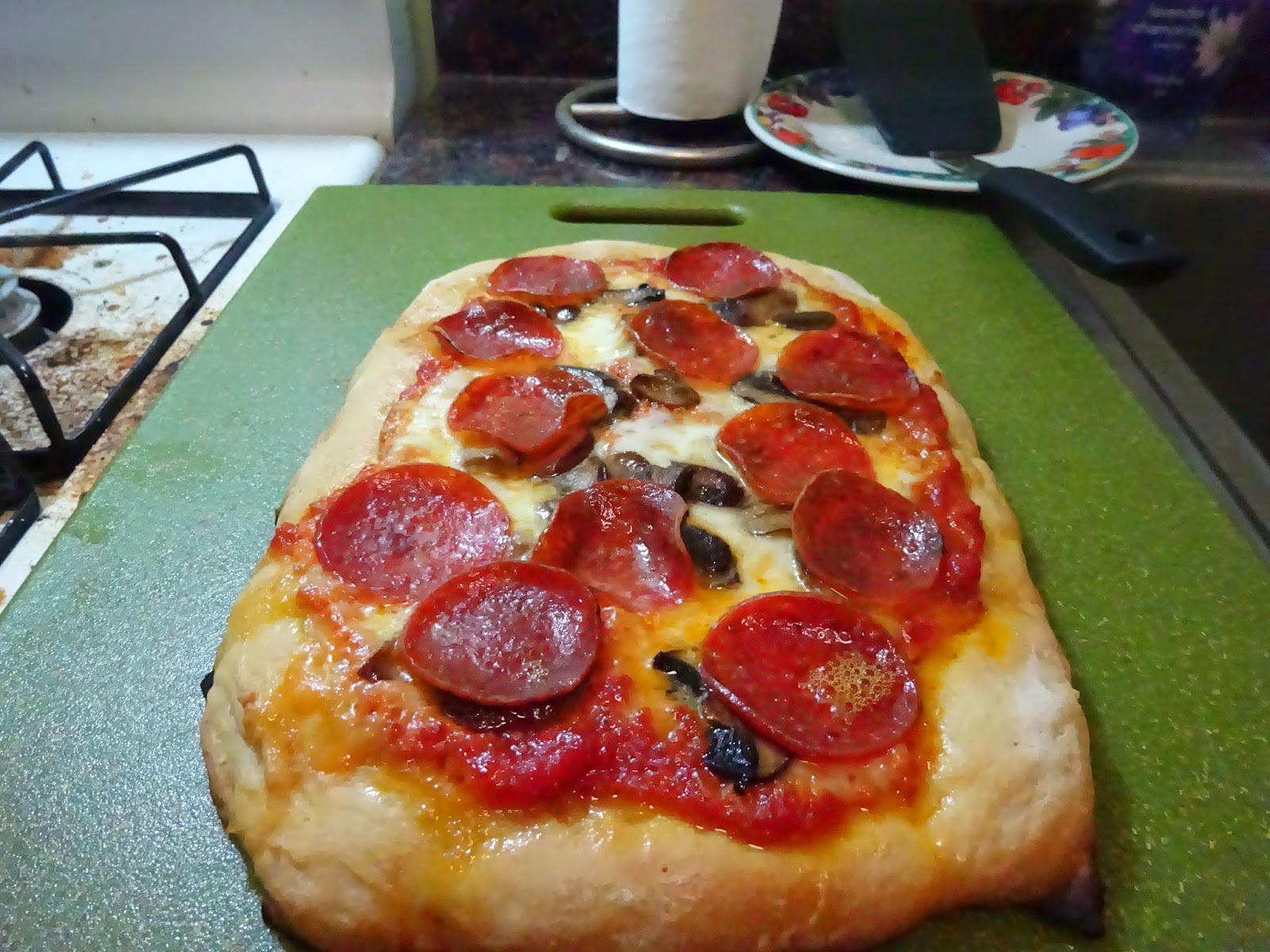Cold Fried Chicken
Fried chicken is one of those inexplicable things in the universe - the general rules of culinary mastery don't necessarily apply. While delicious fresh, why is it actually better after a night in the fridge? Why is Royal Farms fried chicken better than anything I've ever paid for at an actual restaurant? Why is the drumstick (handle chicken, according to some kids I know) the absolute most desirable piece of the bird? And why is a 12 pack of drumksticks the cheapest pack of chicken you can buy, while boneless, skinless, bland-ass chicken breast is the most?
Fried chicken isn't something we made at home growing up (even though we had a Fry Daddy). It wasn't until I received the Ad Hoc cookbook one year that my friends Tim and Kate told me I HAD to try the fried chicken recipe. Since I first made it, I've scaled it down and also made some slight changes (example: hot sauce in the buttermilk). I like this recipe. I won't make any claims that it's the best you'll ever have, but it is a damn fine recipe! Suggestions and tips are always welcome - this is not the last time I'll be making fried chicken.
A point about brining - do it. Its simple, and basically only requires that you plan the meal 24 hour in advance to actually cooking it. I did a 12-hour brine here, and the chicken itself was so tender and full of a lemony honey flavor. Once you try brining, you will start using it for just about every cut of meat that comes into your kitchen. What is brining, you ask? This will succinctly describe it for you better than I can.
Ingredients:
15-18 pieces of chicken. I used drumsticks, all the way down.
Brine:
- 1/2 gallon water
- 1/2 cup kosher salt
- 1/8 cup honey
- 6 bay leaves
- 1/2 head of garlic, cut horizontally
- 1 tablespoon black peppercorns
- 1/4 of a bunch of thyme sprigs
- 1/4 of a bunch of flat leafed parsley sprigs
- Grated zest and juice of 2 large lemons
Coating:
- 6 cups all purpose flour
- 1/4 cup garlic powder
- 1/4 onion powder
- 4 teaspoons paprika
- 4 teaspoons kosher salt
- 1 teaspoon freshly ground black pepper
- 4 cups buttermilk
- 1/2 cup Crystal hot sauce
- oil for deep-frying. Crisco or Peanut are my recommendations, but vegetable or canola work in a pinch.
To Prepare:
- The brining needs to occur for at least 12 hours. As such, prepare the brine the evening before you intend to cook the chicken, allowing the chicken to brine overnight.
- Combine all the ingredients for the brine into a large pot. Bring to a boil for one minute, then allow to cool to room temperature.
- Rinse the chicken in cool water, then pat dry with paper towels.
- Once the brine is at room temperature, add the chicken to the pot. Cover and place into the fridge for at least 12 hours.
- 1-2 hours before you intend to fry the chicken, remove the pot from the fridge. Pat dry the pieces of chicken, and lay them out on paper towels. Allow the chicken to get to room temperature before proceeding to the next steps. (1-2 hours noted above)
- For the coating process, I like to use a three bowl system, right near my frying oil. Start by mixing the dry coating ingredients into one large bowl. Separate half this mixture into another large bowl. In a third bowl, add the buttermilk and hot sauce, stirring to combine.
- In a large, steep-sided pot, fill approximately 3 inches high with your oil. Bring to a temperature of 325 degrees. (Note: if you, like every good American, own your own deep fryer, by all means use that for the recipe, knowing that you will likely need to change the oil when this is done. In the alternative, I used a nice cast iron pot since my deep fryer is full of peanut oil and I was making this for a picnic where some of the kids may have had peanut allergies)
- As the oil is heating, you can pre-coat all of your chicken. Start by covering the chicken in the first coating bowl.
- Now did the coated chicken into the buttermilk mixture, allowing it to drip off any excess buttermilk.
- Dip the buttermilk chicken into the other coating bowl. Shake off any excess coating, then lay the chicken out on a baking sheet while you coat the remaining pieces.
- Once the oil is at 325 degrees, carefully add a few pieces of chicken to the pot. The chicken should take anywhere from 12-15 minutes to cook. Look for a dark golden batter, as pictured. Remove the finished chicken from the oil, placing on a tray covered in paper towels to help drain. Repeat until all chicken has been cooked.
- The chicken is ready to eat now if you are going for hot and crispy; however, if this is for tomorrow's picnic, let the chicken cool down to room temperature, then place in a sealed plastic bag and let rest ion the fridge overnight. You will be amazed at the taste difference between the cold and the hot fried chicken. Remember to serve the cold fried chicken at refrigerator temperature.
Bon appetit!


















Comments
Post a Comment